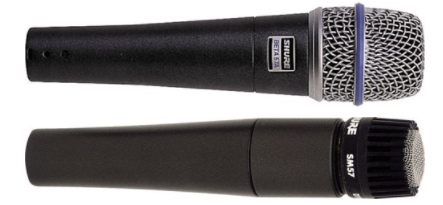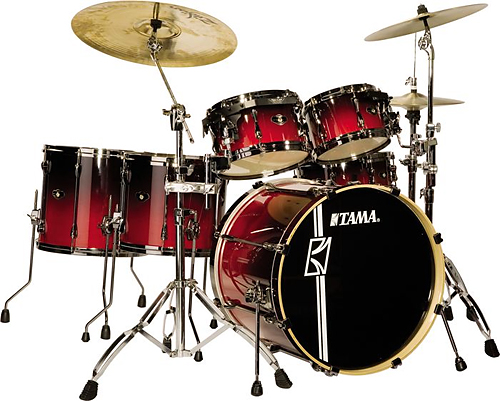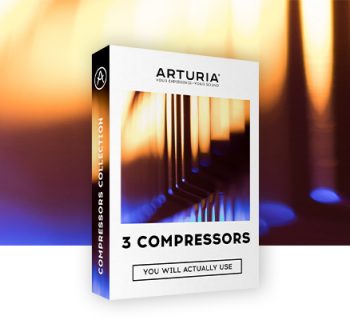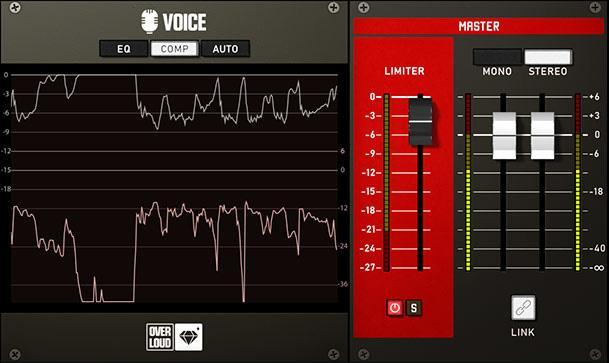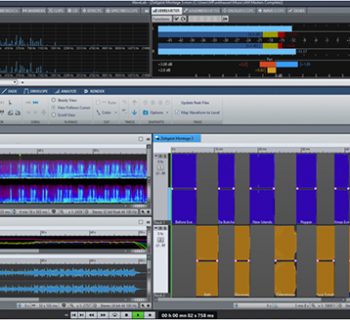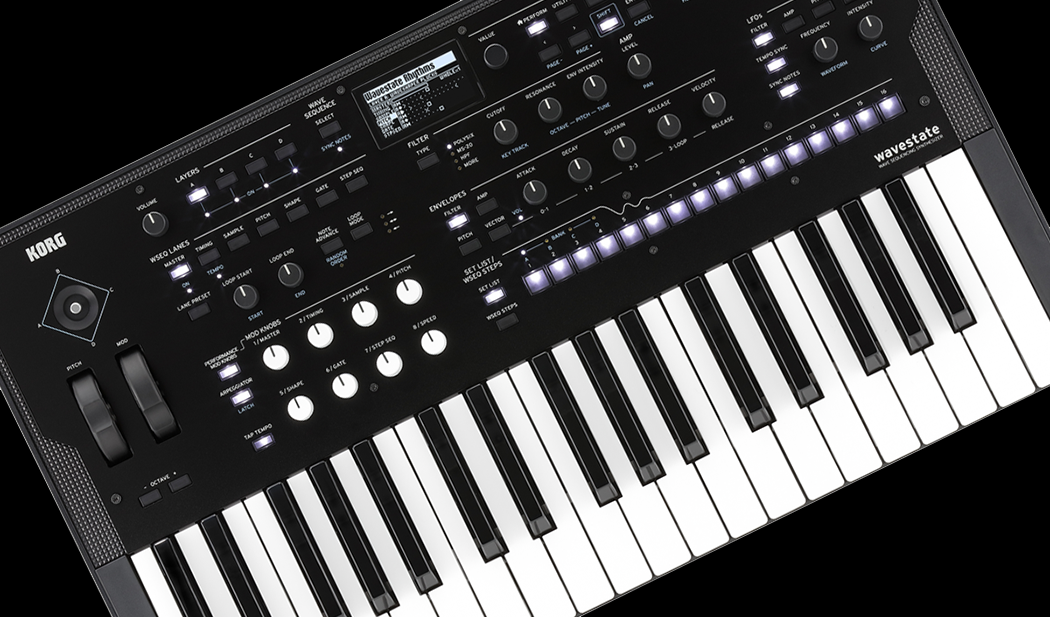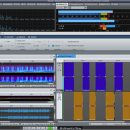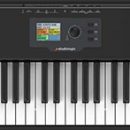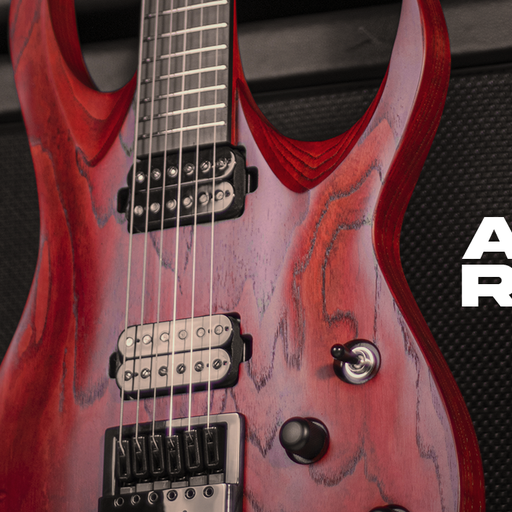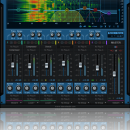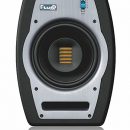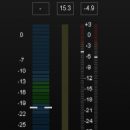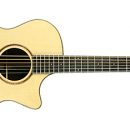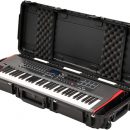Is it time to retire the old industry standard?
The Shure SM57 microphone is an industry standard bearer, widely used on stage and in recording studios. Despite numerous alternatives available at price points all across the map, in the world of rock music, it’s still a perfectly accepted practice to record drums and guitar speakers with one or more of these inexpensive workhorses.
Shure’s Beta line offers various “improvements” to the mics in the SM line, featuring subtle changes across the microphone specs. Although similar to the SM family of products, the Beta series mics have a slightly different sound that makes them sometimes complimentary to, and other times a great alternative to, the familiar classics.
| Category | Value | Rating | ||||
| Features | 20% |
|
||||
| Usability | 25% |
|
||||
| Sound | 25% |
|
||||
| Documentation & Support |
10% |
|
||||
| Price | 20% |
|
||||
| OVERALL RATINGS: SM57 = 3.4 Stars. Beta57a = 3.4 Stars. |
||||||
With Shure’s Beta57a available for an additional $40 over the classic SM57, we thought it was time to revisit the mics in our studio and ask the question, “Would we be better served using Beta57s instead of SM57s?”
After subjecting the mics to testing with guitars, drums, and vocals, it became clear why Shure maintains both product lines. Though the differences are somewhat subtle in the specs department, differing primarily in the very low and very high ends of the spectrum, they are absolutely noticeable in our recorded audio sources. If banished to our favorite desert island, we wouldn’t just take one over the other. In fact, after spending time working with them in tandem, we’d have to throw them both in our suitcase, because depending on the task at hand, the mics really complement each other!
Features
Before digging into the details of each mic, it’s worth talking for a moment about some related mics and clearing up some popular assumptions or misconceptions. First, the Shure SM57 and SM58 — they are essentially the same mics as each other. The mic capsule in a SM57 is the same as that found in the SM58, with the only difference being the external windscreen, which can physically impact where you make use of one instead of the other. They perform virtually the same in all applications.
Many musicians assume that the windscreen shape influences the polar pattern or off-axis noise rejection, but this really isn’t the case. We checked in with Michael Pettersen, Shure’s Applications Director, who confirmed for us that the grill/pop filter has little effect on the pattern, and that the polar pattern is just determined by the acoustical chambers inside the microphone capsule.
The Beta series mics are another story, though. The Beta 58a and Beta 57a do not share the same mic capsule as each other — they are uniquely engineered products.
Speaking of polar patterns, a review of microphone polar patterns is also in order, as this definitely distinguishes one mic’s performance from another, and influences when and where one type or another should be used:

 Cardioid: Primarily picks up sound within a 130-degree angle in front of the microphone, has reduced sensitivity to sounds coming from outside that range, and rejects almost all audio directly behind the mic.
Cardioid: Primarily picks up sound within a 130-degree angle in front of the microphone, has reduced sensitivity to sounds coming from outside that range, and rejects almost all audio directly behind the mic.
Super-Cardioid: Picks up sound within a 115-degree angle in front of the mic, and has almost no sensitivity to sounds beyond 120-degrees off-axis on either side. However, it does, in fact, pick up a narrow range of audio hitting it from directly behind the mic.
Hyper-Cardioid: Similar to the Super-Cardioid, but picks up a slightly narrower range of audio in front of the mic and a larger range of sound hitting it from the rear.
Omni-Directional: Picks up sound hitting it from all directions uniformly.
Bi-Directional: Picks up sound in front of and behind the mic, while rejecting sound hitting it directly from the side.
One significant distinction between the SM57 and Beta57a is that the SM57 has a cardioid pattern and the Beta57a has a super-cardioid pattern. When used in a live sound setting, this distinction should influence your choice of microphone because of issues related to bleed from other instruments, PA and monitor speakers, etc.
In an isolated recording environment, this distinction may not have as large an impact on your sound. But if you routinely move from rehearsal space to clubs, your mic choice can have a real impact on the issue of bleed and feedback. With an SM57 (cardioid mic), it’s best to place your vocal monitor directly behind the mic. While the SM57 will pick up some sound to each side, it rejects almost all sound hitting it from directly behind.
With a Beta57a, on the other hand, directly behind the mike is the precise spot you do not want your vocal monitor — its super-cardioid pattern will pick up the sound and create some glorious feedback. For best results, you’ll want monitors placed at 60-degree angles to each side of the microphone, and Shure thoughtfully provided a cardboard template to hang over your mic that shows, at a glance, the angle at which you should place your floor monitors. We haven’t even gotten to our Documentation section, but this is over-the-top helpfulness!
Sonically, both microphones exhibit extremely similar frequency response throughout most of their range, however it is at the high and low end where the microphones distinguish themselves. The SM57 frequency response ranges from 40 Hz to 15 kHz, whereas the Beta57a covers from 50 Hz to 16 kHz. While this difference doesn’t appear too extreme, particularly at the high end, all it takes is a few audio samples to hear what a significant difference these numbers actually make.

The Beta57a has improved handling noise rejection over the SM57, one reason that it is better suited to hand-held vocal performance than the older SM57. The improved handling also translates to hearing fewer bumps and thuds when mounted on a mic stand.
Compared with the SM57, the Beta57a has a larger grill that appears more aesthetically pleasing for general vocal use, whereas the SM57 has a smaller, barrel-shaped front grill that appears physically designed for use in tighter quarters, like when close-miking drums, where it’s likely that stray drum hits could strike the microphone.
Both the Beta57a and SM57 are capable of handling very high SPLs (sound pressure levels), and are perfectly at home recording your overdriven 100-watt guitar amp or a loud, cracking, snare drum.
In the studio, one notable difference between the mics is in their output level, with the Beta57a being 4dB louder than the SM57. Although we tried to maintain nearly identical studio settings for recording each mic, this difference was obvious, as we had to reduce the gain on our Beta57a mics in otherwise identical recording setups in order to record our signals without clipping.
Both mics are ruggedly constructed, and years of abuse on stages and in studios worldwide are a testament to the manufacturing quality present. They each ship with a mic stand clip and a soft zippered mic bag.
Usability
Both the Beta57a and SM57 were as easy to use as any mic we’ve ever handled. Sporting a standard female XLR connector, neither microphone requires phantom power, nor risks being damaged if phantom power is present across the channels on your mixer.
The SM57 was extremely easy to work with whether miking a drum kit, guitar amp, or being used as a vocal mic (on a stand), though it did pick up more noise from the occasional collision with the mic stand than our Beta57a.
The Beta57a is slightly less useful in its implementation within a drum kit as the larger grill makes it a bigger target for stray drum hits. Further, we would have preferred the Beta57a to retain the cardioid polar pattern of the SM57 for instrument use in live settings as it picks up less off-axis sound. In the studio, though, this isn’t an issue if you’re using it to mic other instruments in isolation.
Sound
We tested the microphones in the following scenarios:
- Recorded high-gain metal guitar and mid-gain hard rock guitar with a customized Ibanez RG-series guitar through a Mesa/Boogie Dual Rectifier Road King II and matching 4x12 speaker cabinet.
- Recorded classic rock, blues, jazz, and clean tones with a Fender Player’s Strat through a Fender Super-Sonic 1x12 combo.
- Recorded snare drum hits on a vintage late ‘70s Ludwig steel-shell snare.
- Performed live (in a band rehearsal situation) using the mics for vocals.
Recording Notes: Guitar speakers were recorded with the mics one inch off the grill positioned approximately two inches from the outside edge of the cone, pointed straight at the speaker. The snare mics were positioned in typical fashion, just off the top and bottom heads pointed at an angle slightly inward towards the center of the snare, with the bottom mic perhaps an inch or two further away from the surface and positioned near the strainer. Mics were recorded straight into a Digidesign 002r to avoid additional coloring by other external preamps or mixing boards.
|
Heavy Rhythm Guitar
|
|
|
Audio Player
SM57 |
Audio Player
Beta57a |
|
Heavy Lead Guitar |
|
| Audio Player
SM57 |
Audio Player
Beta57a |
|
Clean Rhythm Guitar
|
|
| Audio Player
SM57 |
Audio Player
Beta57a |
|
Clean Lead Guitar (with a hint of dirt)
|
|
| Audio Player
SM57 |
Audio Player
Beta57a |
|
Snare Drum — Top Mic
|
|
| Audio Player
SM57 |
Audio Player
Beta57a |
|
Snare Drum — Bottom Mic
|
|
| Audio Player
SM57 |
Audio Player
Beta57a |
The online MP3s (above) do not demonstrate the differences between mics nearly as well as the uncompressed audio samples in our actual Pro Tools LE session. If you have a Pro Tools setup, you can download our complete Pro Tools LE session file (56.6 MB) by clicking this link.
Upon reviewing the sample recordings, our first reaction was that the Beta57a exhibited fantastic crispness and a bright high end, whereas the SM57 sounded downright muddy by comparison! Careful review of the recordings brought things into much clearer focus for us, though.
As its frequency response suggests, the SM57 captured more low end in our sounds than the Beta57a. Guitars as well as our snare drum exhibited significantly more depth and richness of tone when recorded by the classic SM57. The 10kHz difference at the bottom of the frequency scale really made a difference, and what first sounded muddy during a quick A/B comparison was really just the presence of greater low end and less captured frequency at the top. Through the middle of the spectrum, results appeared nearly identical when analyzed using a spectrum analyzer plug-in from Troodon Technologies.
The Beta57a, although only spec’ed to capture 1kHz more frequency at the top end, responded quite differently with our audio recordings, and we loved it! Breathiness and Air were the words that came most readily to our description of the recorded tones. Our snare had a brighter “crack” and our guitar tones had more sparkle (cleans) and more clarity (heavy tones).
What really blew us away, however, was the combination of these two mics. When applying the SM57 to one speaker and the Beta57a to another in our cabinet, the guitar tone was remarkable! There are some more-expensive mics routinely paired with SM57s for recording guitar — we found the sound of the Beta57a made an ideal companion mic that broadened the sonic spectrum that defined our recorded guitar signal (and at a much better price point for the project studio engineer). Although we don’t always mic the underside of a snare drum, recording with an SM57 on top and the Beta57a underneath produced fantastic full-spectrum sounds.
Finally, we put the mics to use in a band rehearsal situation, and here, the nod definitely went to the Beta57a, through which vocals were definitely cleaner sounding. The reduced low-frequency response was actual helpful with our baritone male vocalists, eliminating boominess without compromising tone.
Documentation and Product Support
All Shure mics come with straightforward user guides that cover both the mic specs as well as suggestions for optimal microphone placement and use. The Beta57a even included a template to hang over your mic to ensure proper placement of floor monitors in order to reduce the chance of unwanted feedback!
The fun doesn’t stop there, however, because one trip to Shure’s website will provide you with more help documents on mic usage and recording tips than you could ever hope for.
The documents are quite thorough and well written — if you’re just developing your recording or live sound engineering skills, there is a wealth of information here to be discovered. Heck, we might just ask Shure to start writing some of our tutorials!
Price
The Shure SM57 (MSRP $170) sells for approximately $100, and the Beta57a (MSRP $247.48) sells for approximately $140. Both mics are priced extremely well for the professional quality sound and rugged construction they offer. While you can do plenty of great things with a few SM57s, adding a Beta57a to the mix will really sweeten your sound at a price that shouldn’t require any real debate on your part.
Contact Information
Shure
www.shure.com
Evaluation Short-List
Audix i-5
Audio-Technica ATM650
Sennheiser e935

